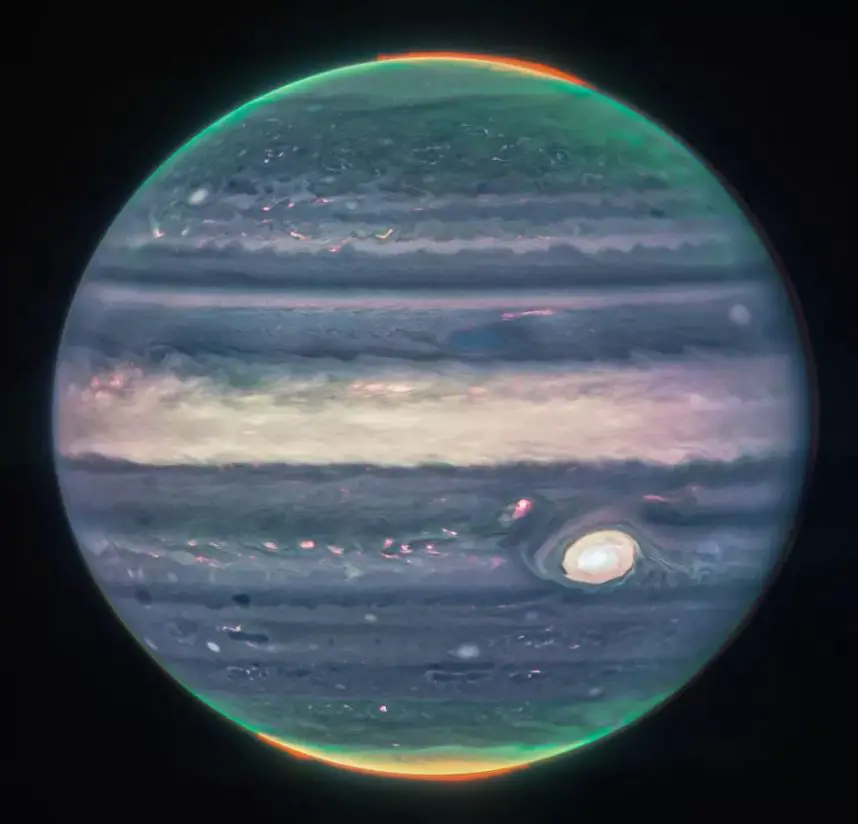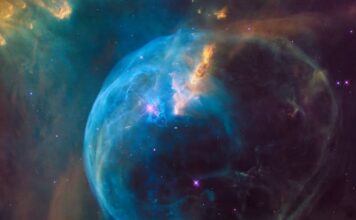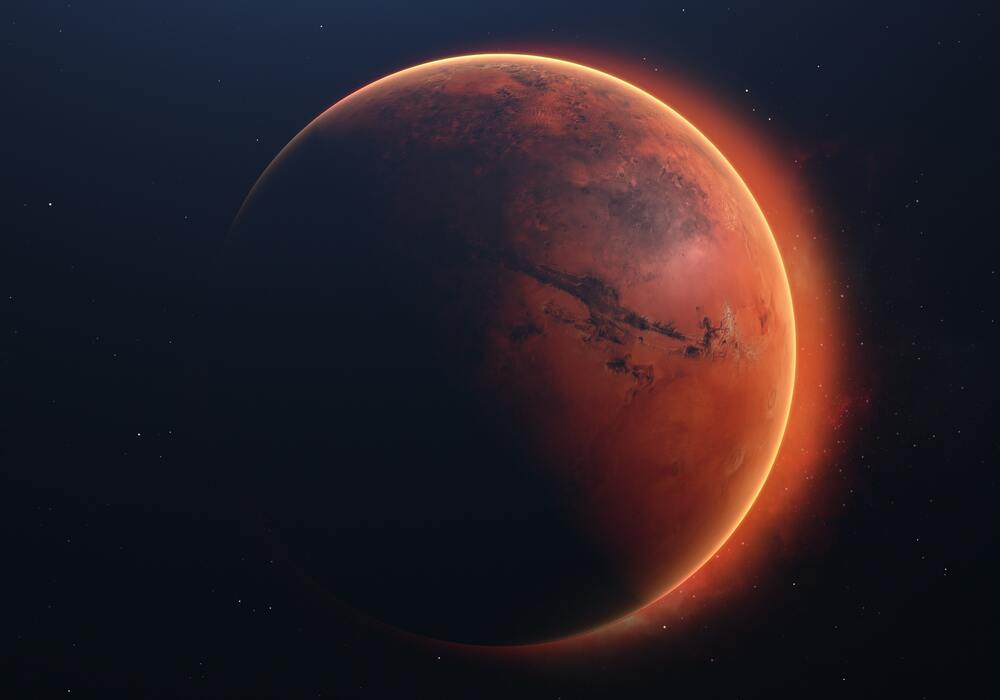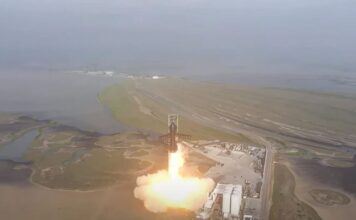The Webb Space Telescope has only been in operation for a few weeks and has returned countless impressive images so far.
The latest batch of composite images is the ultra-clear Jupiter captured by the Near Infrared Camera (NIRCam), which can see the famous Great Red Spot; A very faint ring of Jupiter’s rings, 2 moons of Jupiter, and beautiful auroras covering the poles.
Jupiter images taken by the Hubble Space Telescope and the Juno probe in the past have told us that Jupiter has features such as complex storm systems, cyclones, and striped gas distribution, and its true color is khaki.
In late July, the Webb Telescope Near-Infrared Camera (NIRCam) observed Jupiter at infrared wavelengths slightly longer than the visible spectrum,

Since infrared light is invisible to the human eye, scientists have color-filtered the data (using a different filter for each image) and released two new images of Jupiter that reveal even more incredible detail.
The Great Red Spot, Jupiter’s famous anticyclonic storm that has existed for hundreds of years, appears white instead of reddish in the new image.
NASA says this is because it reflects a lot of sunlight, and the remaining white “spots” and “stripes” are likely the cloud tops of high-altitude convective storms.
In addition, the Webb telescope also captured ultra-faint Jupiter rings 1 million times fainter than Jupiter itself, as well as Jupiter’s moons Amalthea and Adrastea with diameters of 200 kilometers and 20 kilometers, respectively, and some distant galaxies can be seen in the background.
Spectroscopic observations of Jupiter’s aurora will begin later this year, and detailed spectroscopic observations of Jupiter’s Great Red Spot will be planned on July 27 (near-infrared) and August 14-15 (mid-infrared).
First Image Credit: NASA, ESA, Jupiter ERS Team; image processing by Ricardo Hueso (UPV/EHU) and Judy Schmidt




